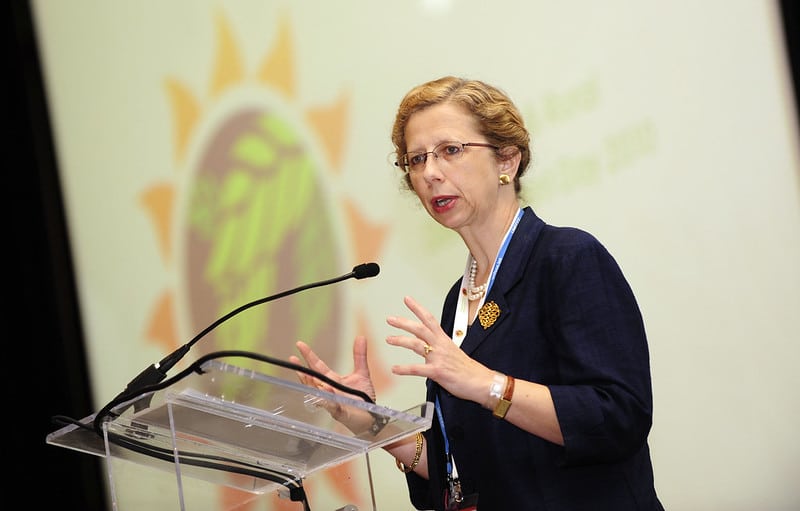A new UN report warns that the world is not prepared for climate change, highlighting how far countries have fallen in implementing adaptation measures. It adds that COVID-19 has pushed planning for climate change down the list of priorities for most countries and that “there is no vaccine for climate change.”
—
At a press briefing, Inger Andersen, executive director of the UN Environment Programme (UNEP) said, “the hard truth is that climate change is upon us,” adding that “its impacts will intensify and hit vulnerable countries and communities the hardest- even if we meet the Paris Agreement goals of holding global warming this century to well below 2°C and pursuing 1.5°C.” This is unlikely. The planet is set to warm by 3°C above pre-industrial levels this century, while 2020 tied with 2016 as the hottest year on record.
However, the report finds that more than a quarter of the signatories on the Paris Agreement still don’t have a single national-level adaptation planning instrument. There are gaps in financing for developing countries and bringing adaptation projects to the stage where they bring real protection against climate impacts such as droughts, floods and sea-level rise.
You might also like: High Ambition Coalition: Preparing for Climate Refugees
While the pace of adaptation financing is rising, it is being exceeded by rapidly increasing adaptation costs. Annual adaptation costs in developing countries could reach $500 billion by 2050. However, adaptation financing is currently far short of what experts say is needed, at $30 billion per year- far too little to ward off the risks posed by climate change. Fewer than five out of 100 adaptation projects have yielded any benefits to date, according to a survey of 1 700 projects. Andersen says, “We need a global commitment to put half of all global climate finance towards adaptation in the next year. This will allow a huge step up in adaptation — in everything from early warning systems to resilient water resources to nature-based solutions.”
Experts at the press briefing agreed that because developed countries are responsible for a majority of the historical carbon emissions, they should play a bigger role in mitigating the climate crisis. They also said that adaptation measures should include installing climate information and early-warning systems, safeguarding people in affected areas and green investments.
The report urges for more nature-based solutions- locally appropriate actions that address societal challenges, such as climate change, and provide human well-being and biodiversity benefits by protecting, sustainably managing and restoring natural or modified ecosystems- financed through public and private finance.
The Global Commission on Adaptation has estimated that investing in adaptation initiatives could yield returns that are three times the costs. Further, Henry Neufeldt, head of impact assessment and adaptation at UNEP, says, “the more we mitigate, the less we have to adapt, and the costs of adaptation are going to be much, much lower.” However, unlike the emissions reduction targets that are part of the Paris Agreement, there are no comparable targets for adaptation. “We don’t know exactly how much adaptation finance is needed because the goals are not clear, the targets are not clear, there is no agreed-upon goal on adaptation at national and global levels,” Neufeldt said.
The report says that achieving the 2°C target of the Paris Agreement could limit losses in annual growth to up to 1.6%, compared to 2.2% for the 3°C trajectory.
The report concludes by saying that all nations must pursue the efforts outlined in UNEP’s Emissions Gap Report 2020, which called for a green pandemic recovery and updated NDCs that include new net-zero commitments. However, the world must also plan for, finance and implement climate change adaptation to be prepared to support those nations least responsible for climate change but most at risk. Doing so is a sound economic decision.
Featured image by: Flickr

















